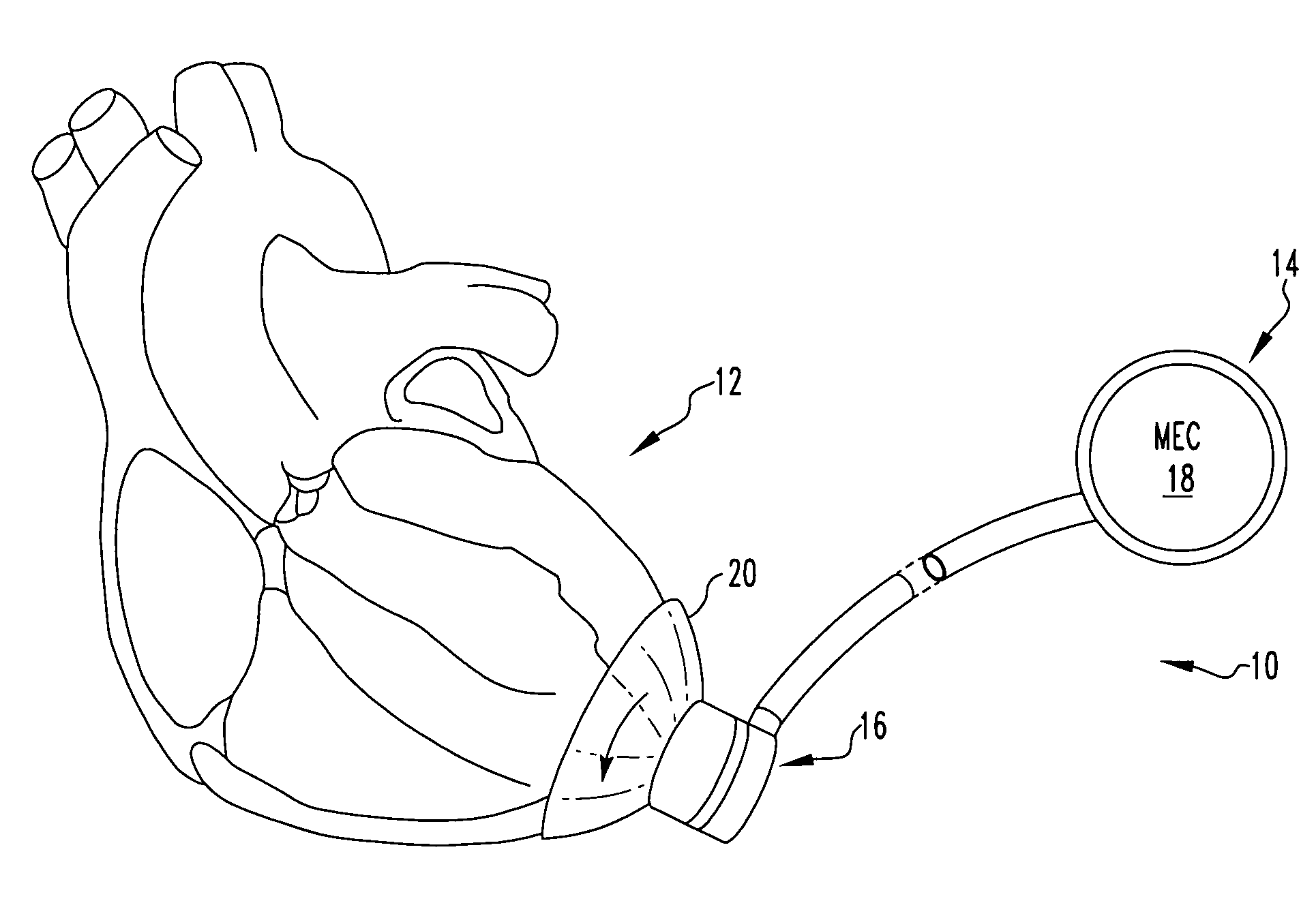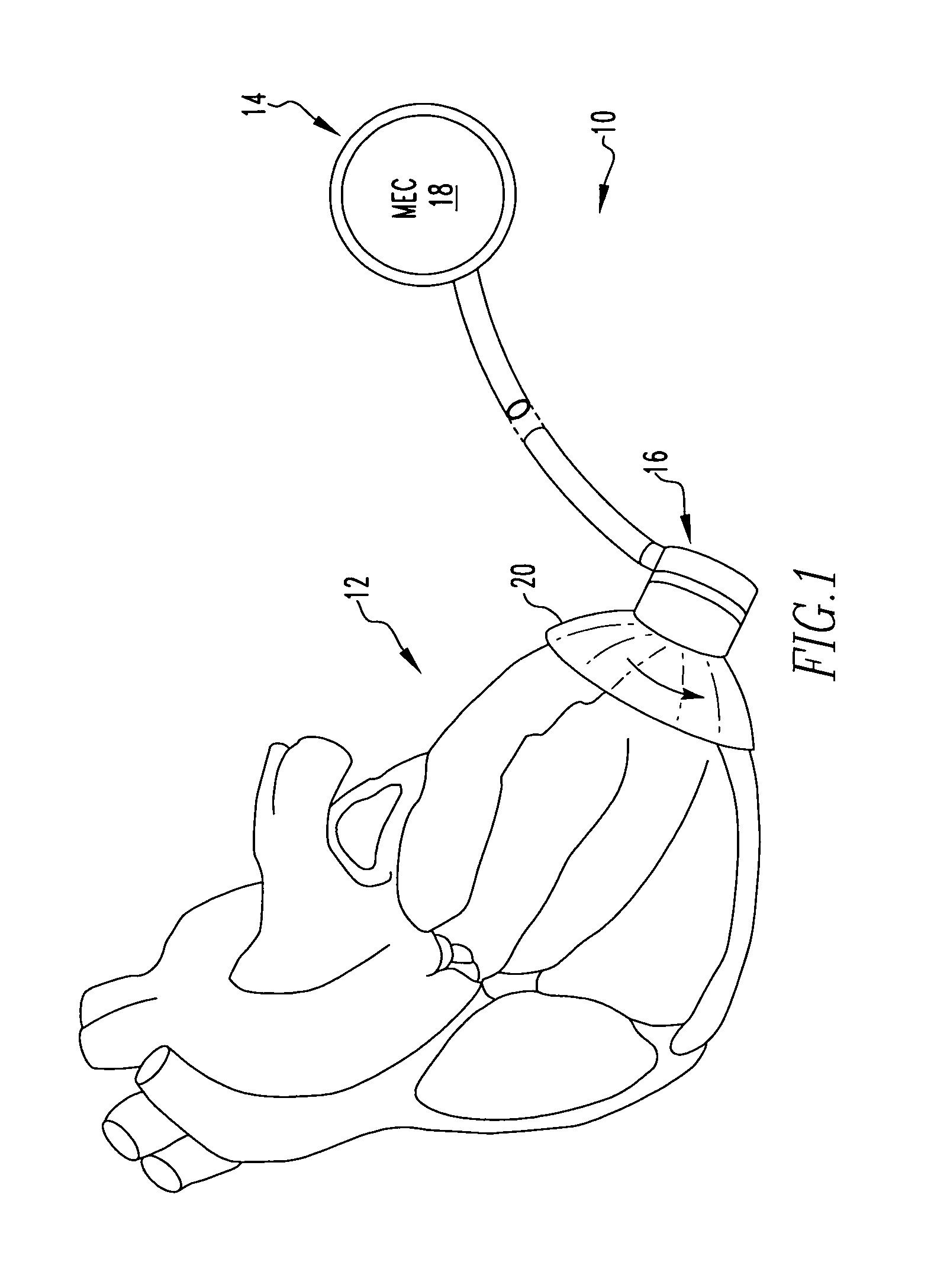Apical torsion device for cardiac assist
a technology of apical torsion and cardiac assist, which is applied in the field of assisting the heart of a patient with apical torsion device, can solve the problems of limiting the approach, not appreciably stemming the course, and chf, and achieves the effects of reducing the effectiveness of commercial vad technology, eliminating additional complications, and improving cardiac function
- Summary
- Abstract
- Description
- Claims
- Application Information
AI Technical Summary
Benefits of technology
Problems solved by technology
Method used
Image
Examples
Embodiment Construction
[0017]Referring now to the drawings wherein like reference numerals refer to similar or identical parts throughout the several views, and more specifically to FIG. 1 thereof, there is shown an apparatus 10 for assisting a heart 12 of a patient. The apparatus 10 comprises an actuator 16 for wringing blood concurrently from both the right and left ventricles of the heart 12 without contacting circulating blood of the patient. The apparatus 10 comprises a power source 14 connected to the actuator 16 to power the actuator 16.
[0018]Preferably, the actuator 16 is a rotary actuator adapted to be attached to the apical aspect of the heart 12 so the apex of the heart 12 can be turned counterclockwise, as viewed from the apex, with respect to the base of the heart 12 to apply torsion to restore natural wringing motion to the heart 12. The actuator 16 is preferably adapted to be attached to the epicardial surface of the heart 12 so as not to contact blood.
[0019]Preferably, the actuator 16 prov...
PUM
 Login to View More
Login to View More Abstract
Description
Claims
Application Information
 Login to View More
Login to View More - R&D
- Intellectual Property
- Life Sciences
- Materials
- Tech Scout
- Unparalleled Data Quality
- Higher Quality Content
- 60% Fewer Hallucinations
Browse by: Latest US Patents, China's latest patents, Technical Efficacy Thesaurus, Application Domain, Technology Topic, Popular Technical Reports.
© 2025 PatSnap. All rights reserved.Legal|Privacy policy|Modern Slavery Act Transparency Statement|Sitemap|About US| Contact US: help@patsnap.com



